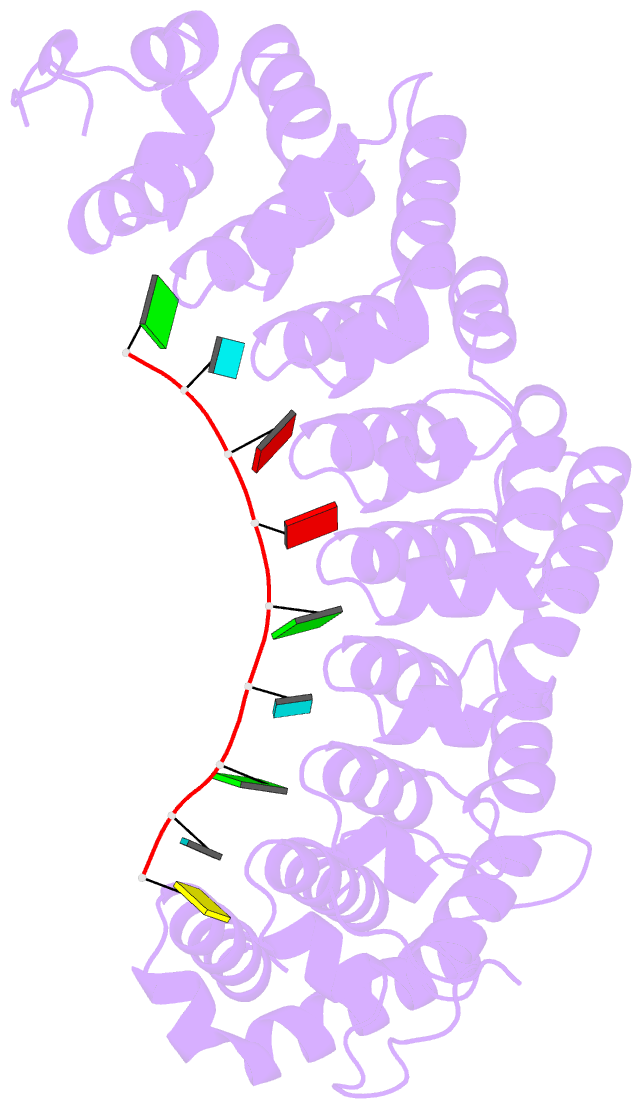Summary information and primary citation
- PDB-id
- 8sj7; SNAP-derived features in text and JSON formats;
DNAproDB
- Class
- RNA binding protein-RNA
- Method
- X-ray (2.09 Å)
- Summary
- Crystal structure of fbf-2 (rbd+ct) in complex with compact fbe RNA
- Reference
- Qiu C, Zhang Z, Wine RN, Campbell ZT, Zhang J, Hall TMT (2023): "Intra- and inter-molecular regulation by intrinsically-disordered regions governs PUF protein RNA binding." Nat Commun, 14, 7323. doi: 10.1038/s41467-023-43098-1.
- Abstract
- PUF proteins are characterized by globular RNA-binding domains. They also interact with partner proteins that modulate their RNA-binding activities. Caenorhabditis elegans PUF protein fem-3 binding factor-2 (FBF-2) partners with intrinsically disordered Lateral Signaling Target-1 (LST-1) to regulate target mRNAs in germline stem cells. Here, we report that an intrinsically disordered region (IDR) at the C-terminus of FBF-2 autoinhibits its RNA-binding affinity by increasing the off rate for RNA binding. Moreover, the FBF-2 C-terminal region interacts with its globular RNA-binding domain at the same site where LST-1 binds. This intramolecular interaction restrains an electronegative cluster of amino acid residues near the 5' end of the bound RNA to inhibit RNA binding. LST-1 binding in place of the FBF-2 C-terminus therefore releases autoinhibition and increases RNA-binding affinity. This regulatory mechanism, driven by IDRs, provides a biochemical and biophysical explanation for the interdependence of FBF-2 and LST-1 in germline stem cell self-renewal.





